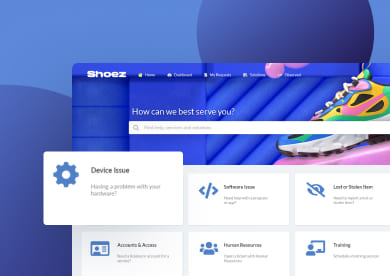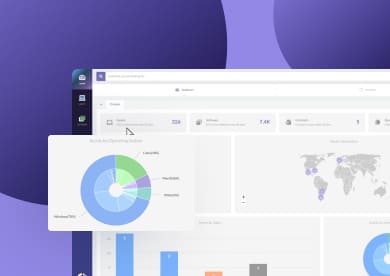Printers Management (also called Print Management) involves the strategic control of an organization's entire printing fleet - hardware, software, and consumables - to reduce operational costs and tighten security.
Instead of reactive maintenance, effective management uses centralized tools to track usage patterns, automate supply ordering, and enforce access policies, turning a chaotic print environment into a secure, efficient workflow.
What is Printers Management?
Printers Management is the centralized administration of an organization’s entire printing ecosystem, going far beyond basic maintenance or troubleshooting. It covers not only the physical printers themselves, but also the software, print drivers, servers, queues, user permissions, and the consumables required for daily operation.
In practical terms, Print Management relies on a dedicated platform or software solution that brings full visibility into the print environment.
This enables IT teams to identify printers, standardize configurations, enforce security and access policies, track usage across locations, automate supply purchasing, and minimize the operational overhead that comes from unmanaged devices. The result is a controlled, predictable, and cost-efficient print infrastructure.
Core components of Print Management
A complete Print Management strategy includes several interconnected elements that must be monitored, configured, and optimized together:
- Printing devices, including network printers, multifunction devices, and specialized equipment used across departments.
- Print drivers, ensuring compatibility, performance, and standardized configurations across operating systems.
- Print servers, which handle job processing, routing, and centralized policy enforcement.
- Print queues, where jobs are held, prioritized, and monitored for bottlenecks or failures.
- Print policies, defining who can print what, where, and with what security or cost controls.
- User access and permissions, ensuring secure use of printing resources and preventing unauthorized output.
- Consumables, such as toner, ink, and paper, tracked to avoid shortages and optimize replacement cycles.
Together, these components form the foundation of a scalable and secure print environment.
Print Management vs basic print monitoring
Basic print monitoring focuses on surface-level visibility, such as confirming whether a printer is online or whether a job has failed. It is reactive, limited in scope, and generally insufficient for environments with multiple devices or high printing demands.
Print Management, on the other hand, is a proactive and strategic discipline. It delivers insights into usage patterns, user behaviors, device performance, and cost trends.
It also incorporates automation, such as supply replenishment, driver updates, or policy-based printing rules. Most importantly, it introduces governance, ensuring standardized configurations, stronger security, and predictable operating costs.
How to implement a Print Management strategy
Moving from a chaotic, device-by-device printing environment to a controlled, optimized one requires structure, tooling, and clear governance. A Printers Management strategy should begin with an accurate understanding of the existing fleet, followed by standardization, centralization, and ongoing monitoring.
The goal is to build a predictable system where IT can manage demand, minimize costs, and enforce security across all printing resources.
#1: Assess and right-size your printer fleet
The first step is to understand what you have and how it is being used. This involves:
- Inventorying all devices, including network printers, multifunction equipment, and location-specific units
- Mapping device locations and owners, clarifying who uses each printer and for what type of workload
- Analyzing usage patterns, including volume trends, peak times, user behavior, and demand per department
- Identifying redundancies or underutilized devices, which can be consolidated, relocated, or removed
- Matching capacity to real needs, ensuring each area has the right type of printer, not just “the one that happened to be there”
This process reduces waste, standardizes device types, and helps IT regain control over scattered or legacy printing equipment.
#2: Centralize control with tools and policies
Once the fleet is right-sized, the next step is gaining full operational control. A Print Management tool plays a central role by providing:
- A single pane of glass to oversee all devices, queues, drivers, and alerts
- Automated supply monitoring and replenishment, ensuring toner, ink, and paper are restocked before they interrupt work
- Role- and group-based policies, defining what users can print, where, and under which conditions
- Secure printing features, such as authentication, pull printing, and encrypted data transfer
- Compliance and audit logs, tracking user actions and device activity for governance and security
- Reporting and analytics, offering insights into usage patterns, costs, device health, and areas for optimization
Centralized tools not only streamline operations but also reduce manual effort, making it easier for IT to enforce consistency across multiple departments or locations.
Best practices to keep Print Management running
Implementing Print Management is just the beginning. To keep the environment efficient, secure, and cost-controlled over time, organizations need governance, clear ownership, and continuous review of data and processes.
These best practices help ensure the strategy remains effective as teams grow, tools evolve, and business needs shift.
Governance, ownership, and cross-team alignment
Sustaining a Print Management strategy requires clear responsibilities, consistent processes, and smooth collaboration between IT, operations, facilities, and procurement. Strong governance ensures that printers are managed as part of the broader IT ecosystem, not as isolated devices.
- Ownership and responsibility mapping - Define which teams handle technical configuration, physical maintenance, supply purchasing, and vendor relationships to avoid gaps or duplicated work.
- Integration with IT Service Management (ITSM) workflows - Align print-related incidents, service requests, and change activities with existing ITSM processes to ensure consistent handling and faster resolution.
- Internal service agreements - Establish expectations for response times, escalation paths, and service quality, especially between IT, facilities, and business units.
- Standardized configurations and drivers - Use approved driver versions, security settings, and default configurations across all devices to minimize troubleshooting complexity and reduce variability.
- Security and policy alignment - Ensure printing rules, authentication methods, retention policies, and data protection controls are consistent with the organization’s overall IT security framework.
Metrics, reviews, and continuous improvement
Measurement is essential to keeping a Print Management strategy effective over time. While KPIs vary depending on business goals and the maturity of each organization, tracking performance data helps IT identify waste, detect issues early, and refine policies based on real usage rather than assumptions. Below are examples of valuable metrics to get started.
- Print volume by user or department - Helps identify heavy usage areas, assess whether demand matches device capacity, and reveal opportunities for optimization or consolidation.
- Cost per page and per device - Supports budgeting and forecasting efforts by showing which printers are the most expensive to operate and where consumables are being used inefficiently.
- Incidents and errors per printer - Highlights recurring technical issues, unreliable devices, or configurations that require adjustments to avoid repeated disruptions.
- Device downtime and impact on productivity - Measures how often printers are unavailable and how that affects user workflows, helping IT prioritize maintenance, replacements, or relocations.
Regular reviews of these metrics allow teams to adjust policies, redistribute devices, and improve security and user experience over time. Organizations looking to bring even more structure into their processes can benefit from ITSM and IT Asset Management (ITAM) solutions that centralize service workflows and asset data.
How InvGate Asset Management simplifies Print Management

InvGate Asset Management is a no-code IT Asset Management platform designed to be simple to deploy, intuitive to use, and powerful enough to manage complex environments.
When it comes to Print Management, the tool centralizes visibility, automates discovery, and gives IT teams the granular insights they need to keep printers healthy, secure, and fully operational.
#1. Detect network and USB-connected printers instantly
With InvGate’s Network Discovery feature, IT teams can automatically detect printers connected to the corporate network. The platform also identifies devices connected via USB to laptops or desktops, and if they are missing from the inventory, InvGate can add them automatically.
This ensures that every printer, regardless of how it is connected, is tracked, monitored, and properly governed.

#2. Monitor printer health, ink levels, and supply status
Once a printer is detected, InvGate Asset Management exposes key operational insights directly from the printer profile. Depending on how they were discovered, IT teams can view:
- Ink and toner levels.
- OPC drum status.
- Developer unit lifespan.
- Waste ink tank capacity.
- Fuser, transfer, and cleaning unit lifespan.
- Printer uptime, discovery source, associated requests, and custom fields.
Monitoring these data points helps teams anticipate failures, schedule maintenance proactively, and avoid unexpected downtime or supply shortages. In short, it transforms printer maintenance from reactive to fully predictive.
#3. Use smart tags for visual, automated grouping
InvGate’s smart tags make it easy to categorize printers based on conditions like "low supplies."
These automated, color-coded tags help IT quickly identify at-risk printers and prioritize interventions, turning large fleets into organized, manageable groups.
#4. Build dashboards to track printer performance
Custom dashboards allow teams to visualize printer activity, supply status, incident trends, and operational health in real time. This gives IT a clear overview of fleet performance and makes it easy to spot patterns, bottlenecks, or devices that need attention.
If you want to see how InvGate Asset Management can help you monitor, control, and optimize your print environment, request your free 30-day trial today and explore the platform in action.















